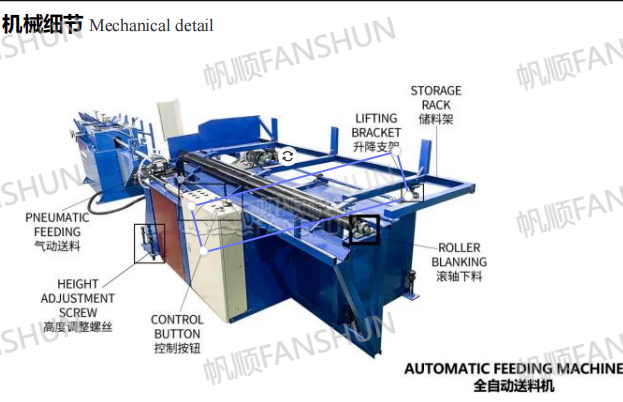The working principle of vibrating feeder (also known as vibrating feeder) is to use vibration to transport materials from one place to another, often used in the production line for the transportation, classification and directional arrangement of various raw materials or parts. Its working principle mainly depends on the generation and transmission of vibration, as follows:
The working principle of vibrating feeder:
Vibration generation:
A vibrating feeder usually consists of a vibrator, a chute or hopper, a base and a spring support.
Vibrators usually use electromagnetic drives or electric motors to generate vibrations. The electromagnetic driver is composed of an electromagnet and a spring, and the electromagnet produces periodic attraction and release force through the change of current, so that the chute produces vibration.
For motor driven vibrators, the vibration force is usually generated using an eccentric block (unbalanced weight) or eccentric shaft.

Vibration transmission:
The resulting vibration is transmitted through the spring and support structure to the chute or hopper, forming a vibration pattern with a specific frequency and amplitude.
The chute is usually inclined or horizontally placed, and the direction of vibration is combined with the tilt Angle to form a composite vibration, making the material move forward along the chute.
Material handling:
Under the action of vibration force, the material is constantly lifted in the trough, jumps forward, then falls, is lifted again, and so on. This vibrating action moves the material forward along the chute or guide rail.
The adjustment of vibration frequency and amplitude can control the flow rate and conveying speed of the material to adapt to different production needs.
Separation and orientation:
For materials that need to be arranged or sorted in a directional manner, the trough of the vibrating feeder can be designed to be a specific shape, such as a spiral shape, with grooves or baffles. These designs allow the material to be automatically separated, arranged and oriented by vibration.
When the material reaches the specified location or exit, it can enter the next process or be transferred to the next processing stage.
Advantages of vibrating feeder:
High efficiency: The vibrating feeder can continuously and evenly transport materials to the specified location, improving production efficiency.
Energy saving and environmental protection: Compared with other conveying methods, vibration feeder has low energy consumption, and no damage to the material, suitable for brittle or easily damaged materials.
Simple operation: The structure of the vibrating feeder is relatively simple, easy to operate and maintain, and easy to adjust and control

